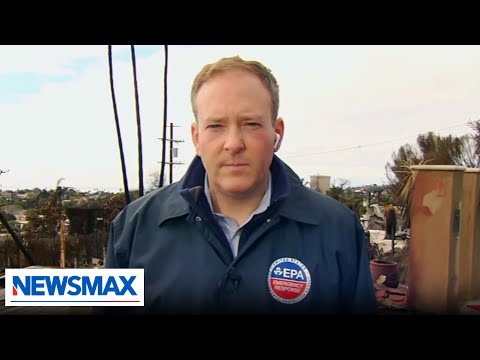In the heart of California, tragedy has struck as wildfires ravage neighborhoods, leaving thousands of homes burned to the ground. Areas like Altadena and the Palisades have taken the brunt of these disasters, and residents are left grappling with the aftermath. As the flames are extinguished, the focus now shifts to recovery and rebuilding. Governor Gavin Newsom recently found himself in Washington, D.C., seeking federal assistance for the monumental task ahead, but critics point out that his own state government bears some responsibility for the mess.
Newsom’s visit to the White House was a strategic move to secure federal funds, but it raises eyebrows as many wonder why he wasn’t back home dealing with the destruction. After all, while he was meeting with the president, the Environmental Protection Agency (EPA) was responding quickly on the ground, led by EPA Administrator Lee Zeldin. With over 1,200 workers dispatched and an ambitious 30-day timeline set by President Trump, the EPA is jumping into action, ready to start the process of clearing hazardous materials and assessing damages.
Zeldin emphasized that this wildfire response is the largest in EPA history. While it’s not something anyone wishes to witness, the determination to help the affected communities is palpable. More than 7,000 properties have already been assessed, but speed is of the essence. Local residents are anxious to start rebuilding their lives, and there’s a fear of lengthy delays due to bureaucratic red tape. That concern about waiting years to rebuild while still paying mortgages and property taxes is very real for many.
Behind the scenes, the federal and state governments are reportedly engaging in discussions to streamline the cleanup process. Zeldin highlighted the collaborative effort involving different agencies on the ground, aiming to empower residents and cut through the red tape that often hinders progress. This proactive approach stands in stark contrast to the typical bureaucratic sluggishness that accompanies disaster recovery, demonstrating a commitment to getting things done swiftly.
The question of federal funds tied to state reforms is a significant one. There’s chatter that future federal assistance may hinge on how California handles its forest management and wildfire mitigation strategies. Many agree that it’s time for common-sense reforms to prevent these catastrophic fires from happening again. With wildfires wreaking havoc in suburban areas, it’s not just an environmental issue; it’s a matter of accountability and governance.
As the smoke clears, the hope is that the recovery process will foster a stronger, more resilient community. With the federal government stepping in swiftly, the focus now rests on rebuilding not just homes, but also the trust in systems that protect and serve the people. There’s an opportunity for California to rise from the ashes, with a commitment to learn from the past and ensure a safer future. As efforts unfold, the nation watches closely, eager to see how this resilient spirit—and perhaps some newfound common sense—will shine through the darkness.



